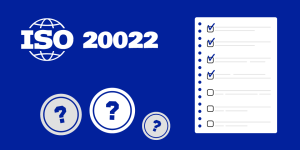Historically, the concept of copyright arose as a reaction to the rapid development of print culture, aiming to strike a balance between promoting the creation of recent works and allowing for the dissemination of knowledge. Rooted in the Statute of Anne, 1710, the earliest form of copyright law was enacted in England, with the principle of providing creators exclusive rights to their works. Over time, as societies and technologies evolved, so did the complexities surrounding intellectual property, making the need for more varied licensing options palpable.
In the contemporary digital era, where information is shared at unprecedented rates, traditional copyright frameworks can sometimes act as barriers rather than enablers. This is particularly true for creators who wish to share their works more freely with the world, fostering collaboration and open access to knowledge.
Enter open licensing—a flexible alternative to traditional copyright. Open licenses offer creators a spectrum of rights they can retain, while also granting certain permissions to the public. Such licenses are tailored to accommodate the multifaceted needs of today’s digital creators and consumers, providing clearer pathways for sharing and collaboration, as in a CC0 collaboration.
The advent of open licensing can be attributed, to the efforts of organizations such as Creative Commons (CC). Acting as a beacon in this realm, Creative Commons has pioneered the development of a suite of licenses catering to various needs, each addressing distinct aspects of sharing and reuse. This Cryptopolitan guide will tell you everything you need to know about CC0.
The Birth and Philosophy of Creative Commons
In the early 2000s, amidst a digital revolution, the need for a more adaptable licensing system became evident. Traditional copyright laws, although foundational, appeared to be too restrictive for an advancing digital space. Recognizing this gap, the establishment of Creative Commons in 2001 marked a pivotal moment in the world of intellectual property.
Creative Commons was conceived by Lawrence Lessig, Hal Abelson, and Eric Eldred, among others. Their primary intention was to design a platform that would provide legal tools to ensure that creativity, knowledge, and innovation could be shared and built upon more openly. The goal was clear: to recalibrate the balance between the individual rights of creators and the collective right of society to access and build upon this wealth of knowledge.
The mission of Creative Commons has always been to maximize digital creativity, sharing, and innovation. Their licenses, made available free of charge, are characterized by their simplicity and adaptability. Through these, creators can choose the permissions they wish to keep and those they would grant, thereby determining the extent of the openness of their work.
The overarching vision of Creative Commons is a world where every individual can freely access the sum of all human knowledge. This vision challenges the conventional paradigm, wherein knowledge and creativity are often confined by stringent legal parameters. By providing flexible licensing options, Creative Commons facilitates a global commons of freely available resources, fostering collaboration and promoting a culture of shared innovation.
The Spectrum of Creative Commons Licenses
The digital landscape, abundant with diverse content, requires a suite of licensing options that can cater to a variety of creators and their individual intentions for content sharing. To address this, Creative Commons devised a series of licenses, each designed to offer different levels of permissions and restrictions. This modular approach enables creators to choose a license that closely aligns with their vision for content dissemination.
Attribution (CC BY)
This license allows users to distribute, remix, adapt, and build upon the original content, even commercially, as long as they provide appropriate credit to the original creator. It is the most accommodating of the licenses in terms of downstream use.
Attribution-ShareAlike (CC BY-SA)
Similar to the CC BY license, this license also allows for modification and commercial use. However, any derivative works must be licensed under identical terms, ensuring the “share-alike” principle is upheld.
Attribution-NoDerivs (CC BY-ND)
Under this license, redistribution is permitted, including commercial use. Yet, the content must remain unchanged and the original creator must be credited.
Attribution-NonCommercial (CC BY-NC)
This allows users to remix, adapt, and build upon the original content, but not for commercial purposes. The original creator must receive proper attribution.
Attribution-NonCommercial-ShareAlike (CC BY-NC-SA)
This merges the principles of the CC BY-NC and CC BY-SA licenses. Derivative works are permissible but must not be used commercially and should be licensed under the same terms.
Attribution-NonCommercial-NoDerivs (CC BY-NC-ND)
The most restrictive among the Creative Commons licenses, this permits users to download and share the content as long as they credit the creator, but they cannot alter the content or use it commercially.
Placed distinctly on this spectrum is the Creative Commons Zero (CC0) License, representing the least restrictive option. Its unique position offers a different approach by waiving all copyright and related rights, thereby propelling the content into the public domain. This stark distinction emphasizes the commitment of the CC0 License to open access and unhindered dissemination of knowledge.
Dive into CC0: The ‘No Rights Reserved’ License
Situated at one end of the licensing spectrum offered by Creative Commons, the Creative Commons Zero (CC0) License stands apart, representing a unique philosophical and legal position. Often referred to as the ‘No Rights Reserved’ License, CC0 transcends traditional boundaries set by copyright, providing an avenue for creators to voluntarily relinquish all their copyright and related rights in their work. This gesture elevates the work to a global public domain status, making it freely accessible and usable by anyone, anywhere, for any purpose.
Definition and Scope
The CC0 License is not merely a license but a public domain dedication tool. It allows creators to waive all their copyright and related or neighboring rights in their work. This means that the work can be copied, modified, distributed, and performed, even for commercial purposes, without asking for permission or providing attribution.
Legal Standing
Given the disparities in copyright law across different jurisdictions, achieving a universal public domain status can be challenging. However, the CC0 License has been meticulously crafted to ensure its robustness and applicability across diverse legal systems. In instances where waiving rights is not permissible under local laws, the CC0 acts as a powerful license granting permissions akin to public domain dedication.
Global Applicability
The idea behind CC0 is universal accessibility. To ensure that works dedicated to the public domain through CC0 are devoid of restrictions globally, the license has been designed to be valid and effective regardless of local copyright restrictions or any other related laws.
Key Features and Distinctions of CC0
The Creative Commons Zero (CC0) License embodies a paradigm shift in the approach to content sharing and accessibility. To grasp the depth of its implications, it is vital to understand the features and distinctions that set it apart from other licenses, even within the Creative Commons family.
At the heart of CC0 lies the principle of total relinquishment. Unlike other licenses that might restrict certain rights or mandate specific actions like attribution, CC0 allows creators to forgo all their copyright and associated rights. This effectively means that works under CC0 can be freely used without any obligations to the original creator.
The design of the CC0 License ensures its relevance and applicability across varied legal landscapes. Recognizing the differences in copyright legislation globally, CC0 has been constructed to operate consistently, ensuring that a work is as free from restrictions in one country as it is in another.
Most Creative Commons licenses require attribution to the original creator. However, CC0 stands out in this aspect. While attribution is appreciated and can be seen as a standard practice in many domains, it is not a mandate under the CC0 License. This facilitates seamless integration and usage of the content, especially in scenarios where providing credit might be cumbersome or disruptive.
The CC0 License ensures that there are no limitations on the fields in which the content can be utilized. Whether it is for academic research, artistic creation, commercial exploitation, or any other endeavor, the content remains free for all purposes.
Once a work is dedicated to the public domain under CC0, the effect is immediate. There is no waiting period, and the work becomes accessible to the public instantaneously, ensuring rapid dissemination and integration into new projects or research.
Why Creators Choose CC0: Benefits and Use-Cases
In an advancing digital landscape, creators continuously seek mechanisms to enhance the reach, impact, and usability of their content. The Creative Commons Zero (CC0) License emerges as a preferred choice for many due to its unique features and the unparalleled freedom it offers. This section elucidates the benefits of opting for CC0 and presents practical use cases illustrating its widespread application.
Promoting Widespread Dissemination and Use
With the absence of copyright restrictions, works licensed under CC0 are more likely to be shared, accessed, and utilized by a broader audience. This dissemination can significantly enhance the visibility of the content, amplifying its reach and impact across various platforms and audiences.
Fuelling Creative and Scientific Innovation
CC0 acts as a catalyst for innovation by allowing unrestricted access to source materials. Artists can incorporate CC0-licensed elements into their creations without fear of copyright infringement. Similarly, researchers can utilize CC0 datasets to further scientific understanding, leading to breakthroughs and advancements in various fields.
Real-World Examples of CC0 Applications
Artistic Endeavors: Several artists release their artworks under CC0, enabling other artists to draw inspiration, modify, or incorporate these elements into new creations. This practice fosters a collaborative artistic community where creations evolve through collective input.
Scientific Databases: Many scientific databases, especially those in genomics and other rapidly advancing fields, use CC0 to ensure that data remains freely accessible. This unrestricted access accelerates research by allowing scientists worldwide to collaborate, compare findings, and build upon each other’s work.
Photography: Numerous photographers release select images under CC0, contributing to vast online repositories. These images become invaluable resources for designers, marketers, and other professionals who require high-quality visuals without the constraints of traditional copyright.
Educational Resources: Several educators and institutions are turning to CC0 for their educational materials, facilitating an open exchange of knowledge. This ensures that learning resources are not confined by geographical or economic barriers, democratizing education for all.
Points of Consideration: What CC0 is NOT
Navigating the landscape of open licensing requires precision, especially when considering the unique attributes of the Creative Commons Zero (CC0) License. To ensure informed decisions, it is essential to understand not only what CC0 encompasses but also its limitations and common misconceptions.
Clarifying Common Misconceptions
Public Domain Status: A common misapprehension is that a work under CC0 is automatically classified as “public domain” in a traditional sense. While CC0 aims to emulate the freedom associated with the public domain, it is fundamentally a tool that allows creators to waive copyright and related rights. This distinction becomes crucial in jurisdictions where entering the public domain before the copyright term’s expiration is not permissible.
Limitations of the CC0 License
Irrevocability: Once a work has been designated under CC0, the decision is irreversible. Creators cannot later impose restrictions or revert to traditional copyright protections. Therefore, careful consideration is required before applying CC0.
Not a Guarantee of Quality or Accuracy: The CC0 License speaks to rights and accessibility, not the content’s quality, accuracy, or completeness. Users must exercise due diligence when incorporating such works into their projects.
How it Interacts with Other Rights
Moral Rights: In certain jurisdictions, moral rights are distinct from economic rights under copyright law. While CC0 waives copyright and associated rights, it does not, and cannot, waive moral rights. These rights, which might include the right to object to derogatory treatment of a work or the right to be identified as the author, remain with the creator.
Patents and Trademarks: The CC0 License is primarily constructed around copyright. It does not address or affect rights related to patents or trademarks. Users should be vigilant and seek legal advice if they suspect that a work might infringe on patent or trademark rights.
Comparing CC0 to Other Licenses
The Creative Commons suite offers a range of licenses, each tailored to varying degrees of freedom and restriction. Understanding the distinctions between CC0 and other licenses is pivotal for content creators and users seeking the most appropriate licensing solution for their needs. This section provides an analytical comparison of CC0 against other prevalent Creative Commons licenses.
Key Differences with Other CC Licenses
CC BY (Attribution): While both CC0 and CC BY facilitate wide dissemination of work, the crucial distinction lies in attribution. CC BY mandates that credit be provided to the original creator, a stipulation absent in CC0.
CC BY-SA (Attribution-ShareAlike): This license allows for modifications of the original work, much like CC0. However, any derivative work must be distributed under the same license terms, ensuring that subsequent creations remain as open as the original. CC0, in contrast, places no such stipulations on derivatives.
CC BY-NC (Attribution-NonCommercial): Unlike CC0, which allows for complete freedom in terms of usage, CC BY-NC restricts the commercial use of original or derivative works. This limitation is absent in CC0, emphasizing its commitment to unencumbered access and use.
When to Choose CC0 over CC BY, CC BY-SA, etc.
The decision to select CC0 over other licenses hinges on the creator’s objectives:
Absolute Freedom: For creators desiring that their work be used, shared, and adapted without any constraints, CC0 is the unequivocal choice.
No Attribution Requirements: If waiving the need for attribution is paramount, then CC0 stands out as the optimal choice.
Commercial Use: For those who wish to see their works used in commercial endeavors without restrictions, CC0 proves most accommodating.
Some various tools and instruments facilitate entry into the public domain. The Public Domain Mark, for instance, signals that a work is free of known copyright restrictions. However, CC0 is distinct in that it is a proactive tool, allowing creators to voluntarily waive their rights and thereby emulate public domain conditions.
Bottomline
The ethos behind CC0 and similar licenses resonates with a larger vision: a world where knowledge and creativity are not barricaded behind walls but flow freely, catalyzing innovation and bridging divides. As we navigate the challenges and opportunities of the digital age, it is imperative to champion tools like CC0. They not only empower individual creators but also fortify a collective vision of shared progress and prosperity.





